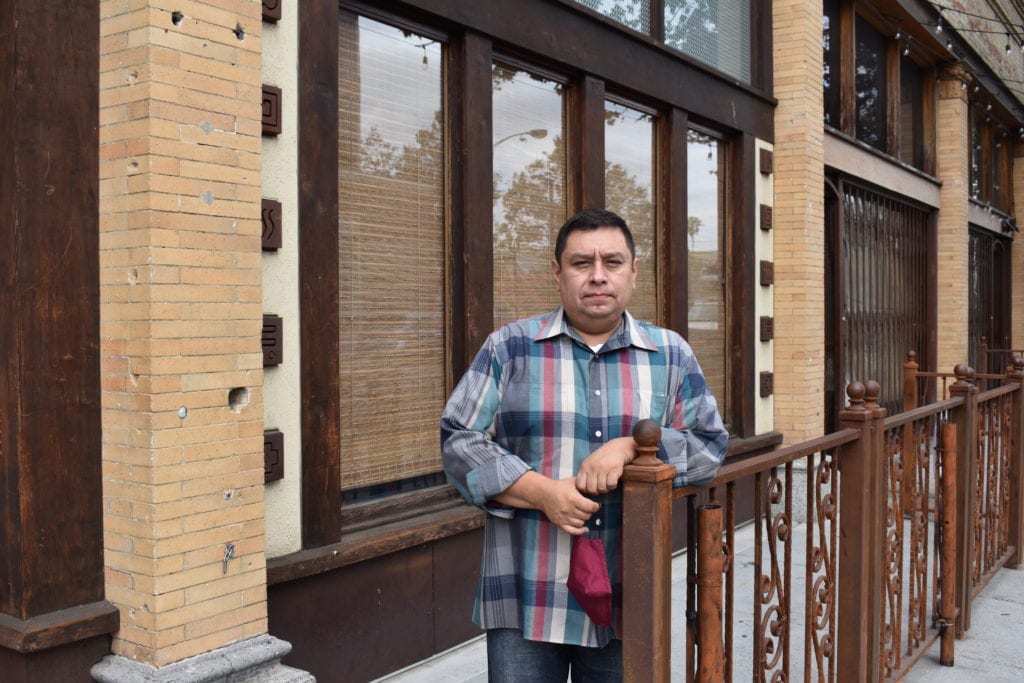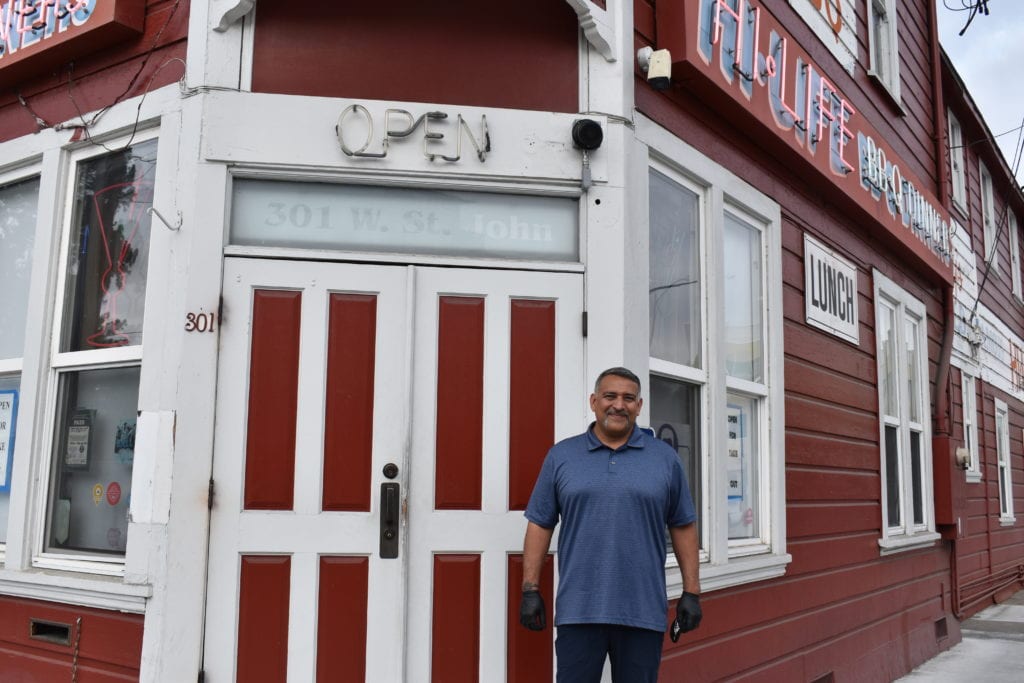As COVID-19 numbers in the county slowly improve, officials gave Santa Clara County businesses the green light to begin operating indoors — but with caution.
Starting Oct. 14, restaurants, churches, movie theaters and other businesses can open at 25% capacity or 100 people, whichever is fewer. They also can host outdoor gatherings of up to 200 people.
“We’ve been ready to open for more than a month and a half,” Adolfo Gomez, owner of Mezcal said. The restaurant, which has served traditional Oaxacan food in San Jose for more than 10 years, will reopen for indoor dining and will also continue outdoor service, Gomez said.


Salvador Avelar, owner of Chavelas Restaurant, has lived in San Jose for 30 years and has owned his business for 5 years.
“COVID has thrown me down the river. I’m down,” Avelar said. “I’ve been struggling to pay my bills.”
Avelar is hoping his business survives the pandemic and said indoor dining will likely help him recover. He plans to accommodate customers as soon as possible, as long as they wear a mask and stay six feet apart.
Dr. Sara Cody, public health officer for the County of Santa Clara, said despite the loosening restrictions, residents should remain cautious.
“Any indoor activity where you have to remove a face covering is going to increase your risk,” Cody said. She said the county discourages anyone who is in a high-risk group or lives with someone in a high-risk group from dining indoors.
For these reasons, Kirk Vartan, co-founder of the pizza joint, A Slice of New York, said his business won’t be reopening for indoor dining and will continue taking to-go orders for now. He said his team’s priority was to keep everyone safe during the pandemic.
Forty percent of A Slice of New York’s revenue came from selling custom pizza by the slice. Customers could come inside, browse the various flavors, create a mix-and-match pie or grab a slice of their choosing. In March, following the spread of COVID-19, the staff began locking the front door and operating out of a delivery window.
“We do all of the business out there — out of that one little window — so it’s been a real challenge,” Vartan said. “We’ve been very grateful for our loyal customers that have been supporting us.”


Jason Aland, owner of the steakhouse Henry’s World Famous Hi-Life, is also not in a hurry to reopen, despite financial losses.
“Business is hurting,” Aland said. “But I don’t believe it’s safe to have people sitting inside of a restaurant.”
As of Oct. 13, the Santa Clara County Public Health Emergency Operations Center reported 22,741 total COVID-19 cases, 100 new cases and one new death.
In addition to safety concerns, Aland said he simply doesn’t have the space to reopen indoors at 25% capacity given his dining room only holds up to 70 people. He could squeeze in 17 people, including staff, but it would still be difficult to keep them six feet apart.
“It really doesn’t make sense to do all that,” he said.
Aland said he may never feel comfortable reopening but would consider indoor dining down the line if the fate of his business depended on it.
San Jose’s Al Fresco outdoor dining initiative helped Alan’s restaurant recover somewhat after the initial March shelter-in-place mandates forced dining establishments to close. But as winter approaches, he knows some people may not want to eat outside.
He is running his business from the parking lot and is looking into installing canopies to keep customers sheltered from future wind and rain. He has also installed additional heaters and lighting.
The city, in partnership with DoorDash, is planning to give out a series of grants this December to help businesses winterize.
Aland, for example, will have to spend more on propane to fuel the portable heaters outdoors to keep patrons comfortable. “I’d be interested in seeing if I could qualify for some grant money for that,” Aland said. “Obviously, every little bit helps.”


The change could also impact local churches who have been anxious to host services indoors.
Carl Woodland, chair of the Interfaith Community of South County, which is 3,500 members strong, told San Jose Spotlight on Oct. 6 that the faith community will take CDC protocols seriously at the orange tier and will “implement them without reservation.”
Finny Abraham, pastor at WestGate church, said although he would love for the indoor gatherings to safely resume, it is not realistic under the current guidelines.
“The county’s order is not really helpful for churches of our size,” Abraham said, adding that the congregation tallies in at around 5,000 members. “We may need to do more than 100 services in order to accommodate all people who come to our church.”
Santa Clara County is now classified as orange tier under California’s color-coded safety plan. Orange tier means the threat of COVID-19 is moderate, and daily COVID-19 cases range from one to 3.9 cases per 100,000 residents. The county issued a revised risk reduction order Oct. 5, allowing Santa Clara County to move into the orange tier upon state approval.
“Moving to the orange tier is significant especially given how large of a county we are,” said James R. Williams, county counsel with Santa Clara. “It’s going to be up to us collectively in how we adhere to the safety protocols, the face covering requirements, social distancing… these are all essential steps to keep us in order for us to stay in the orange tier.”
Most indoor business operations will resume once the county reaches yellow tier, minimal risk status. For the county to be classified as yellow tier, coronavirus cases must be fewer than one in 100,000 people. There also needs to be less than two percent positive COVID tests.
“From there, it’s going to be a game,” Gomez said. The restaurant owner said he’s having a hard time trusting the state and county to stick to their word. “Every time a spike goes up, they’ll go to try to close restaurants again.”
To offer indoor service, businesses will have to submit updated social-distancing protocol. Those who are in violation of county safety measures could be fined up to 5,000 per day, per violation according to Williams.
Contact Carly Wipf at [email protected] or follow @CarlyChristineW on Twitter.



Leave a Reply
You must be logged in to post a comment.